Exploring Burgos Cathedral: A Gothic Masterpiece Unveiled
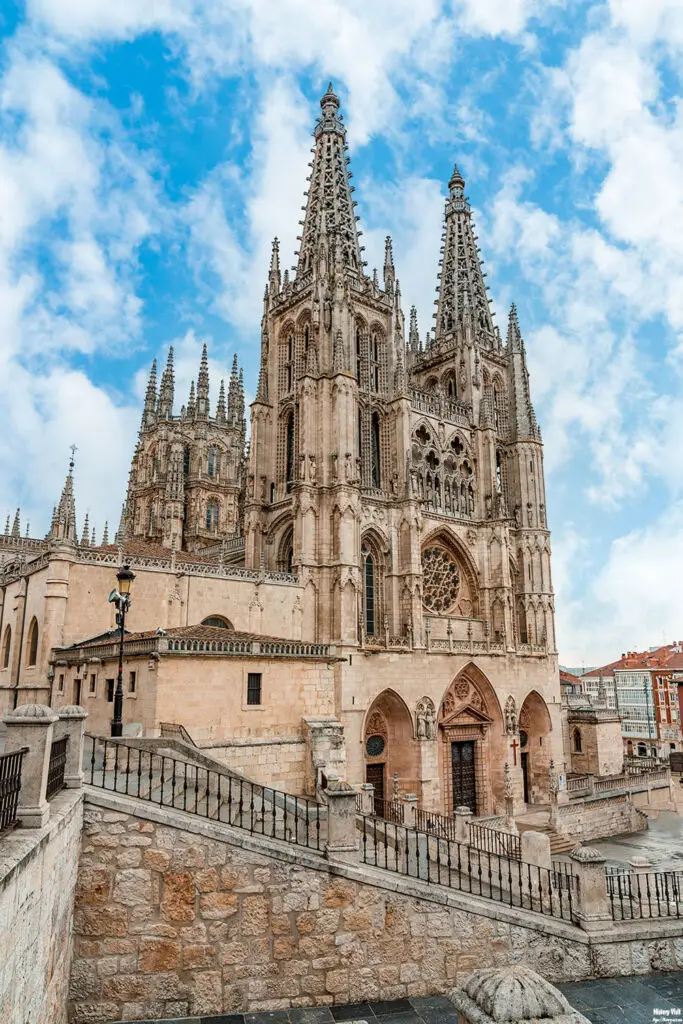
Introduction
Burgos Cathedral, an architectural gem nestled in the heart of Spain, stands as a testament to the grandeur of Gothic design. As a UNESCO World Heritage Site, it attracts visitors from around the globe who come to marvel at its intricate details and historical significance. With its construction spanning over several centuries, the cathedral offers a rich tapestry of art, history, and religious devotion.
This cathedral is not merely a religious edifice; it is a repository of Spain’s cultural and artistic heritage. Each corner of Burgos Cathedral tells a story, from its majestic facade to the exquisite chapels within. It has witnessed numerous historical events and has been a pivotal part of the spiritual and cultural life of Burgos.
In this article, we will take a detailed tour of Burgos Cathedral, exploring its magnificent facade, the grand nave and ambulatory, the stunning stained glass windows, the historically significant Capilla del Condestable, the serene cloister, and the art-rich sacristy. We will also provide practical information for visitors to ensure a fulfilling experience.
The Facade and Portals
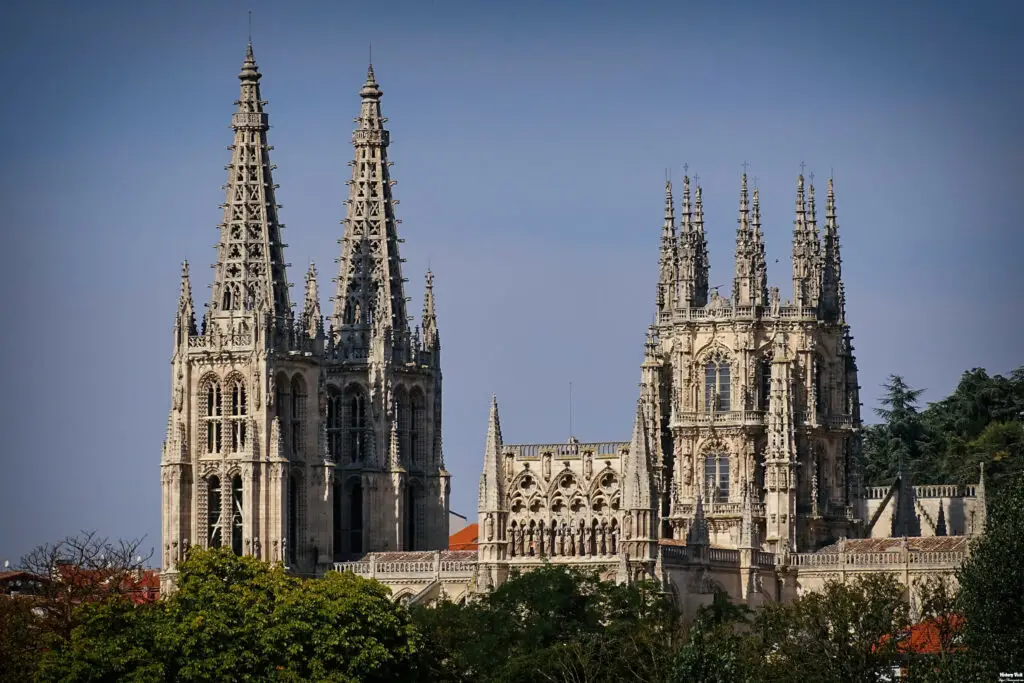
The facade of Burgos Cathedral is a masterpiece of Gothic architecture, characterized by its intricate sculptures and towering spires. The western facade, the primary entrance, features three grand portals, each adorned with detailed carvings depicting biblical scenes and saints. The central portal, known as the Puerta del Perdón, is particularly noteworthy for its depiction of the Last Judgment, a common theme in Gothic cathedrals that reminds the faithful of the final reckoning.
Above the central portal, the rose window adds to the facade’s splendor. This circular stained glass window, with its elaborate tracery, not only illuminates the interior with colorful light but also serves as a symbol of divine perfection and eternity. Flanking the rose window are statues of the twelve apostles, each rendered with a distinct expression, showcasing the skill of the medieval sculptors.
The twin towers, completed in the 15th century, dominate the skyline of Burgos. These spires, rising majestically above the city, are adorned with openwork tracery, creating a delicate lace-like effect in stone. The towers’ height and intricate design exemplify the Gothic aspiration to reach towards the heavens, embodying both architectural ingenuity and spiritual ambition.
The Nave and Ambulatory
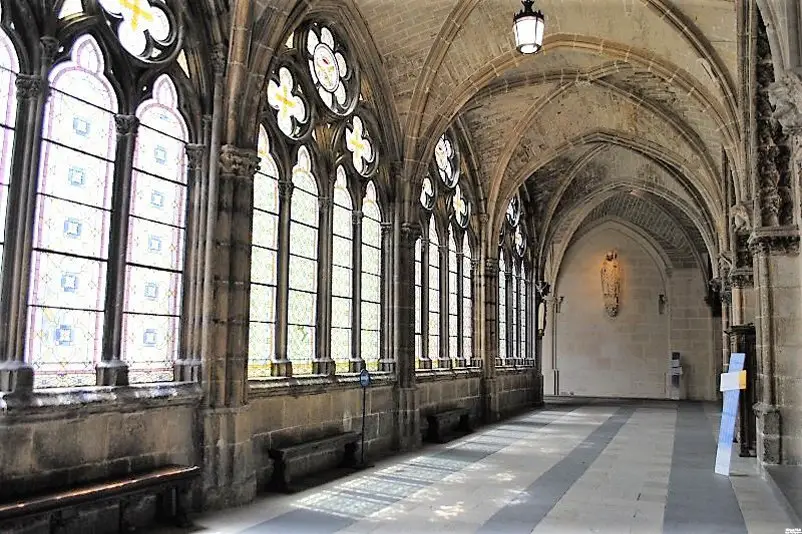
Entering the cathedral, visitors are immediately struck by the vastness and verticality of the nave. The high, rib-vaulted ceilings draw the eye upwards, creating a sense of awe and reverence. The nave, lined with towering columns, leads to the choir and the main altar, emphasizing the grandeur and sacredness of the space. The sheer scale of the nave, combined with the play of light from the stained glass windows, creates a transcendent atmosphere.
The ambulatory, encircling the choir, offers a more intimate experience. This walkway is lined with a series of chapels, each dedicated to different saints and adorned with beautiful altarpieces and religious artifacts. The Chapel of Saint Anne, for instance, features a stunning retable with intricate carvings and gilded details, illustrating scenes from the life of the Virgin Mary.
Walking through the ambulatory, visitors can also appreciate the craftsmanship of the choir stalls, which are masterpieces of wood carving. These stalls, reserved for the clergy, are decorated with scenes from the Bible and the lives of saints, each one a testament to the skill and devotion of the artisans who created them. The ambulatory not only provides a path around the choir but also serves as a gallery of religious art and history.
The Stained Glass Windows
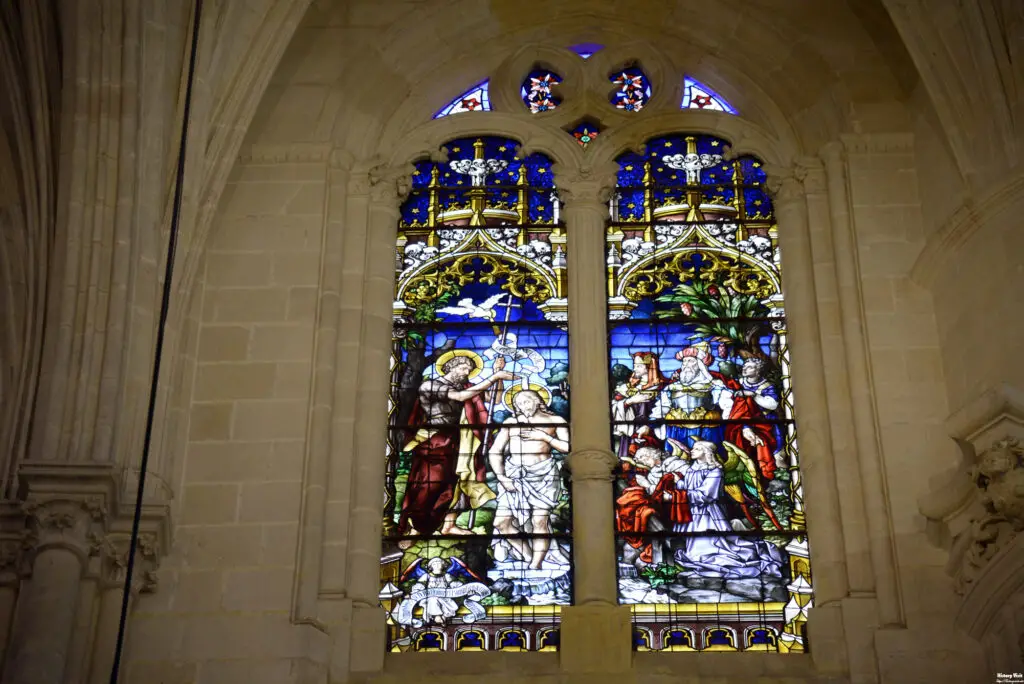
The stained glass windows of Burgos Cathedral are among its most enchanting features. These windows, dating back to the 13th century, fill the interior with a kaleidoscope of colors, transforming the stone walls into vibrant canvases of light. Each window tells a story, depicting scenes from the Bible, the lives of saints, and the history of the Church.
One of the most impressive windows is the rose window above the main entrance. This window, with its intricate patterns and vivid colors, represents the creation and the glory of God. The central medallion often features Christ in Majesty, surrounded by scenes from the Old and New Testaments, while the outer circles are filled with angelic figures and saints, creating a celestial vision in glass.
Another notable window is the one depicting the life of Saint James, the patron saint of Spain. This window, located in one of the chapels, illustrates key moments from the saint’s life and his missionary journeys. The vibrant scenes capture the drama and devotion of Saint James, serving as both an artistic achievement and a devotional tool for the faithful.
The stained glass windows are not just decorative elements; they play a crucial role in the liturgical and spiritual experience of the cathedral. The shifting light throughout the day creates an ever-changing atmosphere, inviting contemplation and reflection. The windows also serve to educate and inspire, conveying biblical stories and religious themes to a largely illiterate medieval population.
The Capilla del Condestable

The Capilla del Condestable, or the Constable’s Chapel, is one of the most significant and beautiful chapels within Burgos Cathedral. Constructed in the late 15th century, this chapel was commissioned by the Constable of Castile, Pedro Fernández de Velasco, and his wife, Mencía de Mendoza. It serves as their burial site and is a testament to their devotion and status.
Architecturally, the chapel is a marvel of Gothic design, featuring a star-shaped vault that is richly decorated with intricate carvings and heraldic symbols. The vault’s complex geometry and detailed ornamentation reflect the pinnacle of Gothic craftsmanship. The chapel’s walls are adorned with sculptures of saints and angels, each one meticulously carved and imbued with a sense of grace and movement.
The altarpiece of the Capilla del Condestable is a masterpiece of Renaissance art, created by the Flemish artist Gil de Siloé. This intricately carved altarpiece depicts scenes from the life of Christ and the Virgin Mary, surrounded by a host of saints and angels. The central panel, featuring the Crucifixion, is particularly striking, capturing the drama and pathos of the moment with remarkable detail and emotional intensity.
The tombs of the Constable and his wife are also works of art, sculpted in alabaster and decorated with scenes from their lives and the coats of arms of their families. These tombs are not only a tribute to the deceased but also a reflection of the social and political milieu of their time. The Capilla del Condestable, with its blend of Gothic and Renaissance elements, is a microcosm of the artistic and cultural currents that shaped Burgos Cathedral.
The Great Cloister and Sacristy

Adjacent to the main body of the cathedral is the Great Cloister, a serene and contemplative space that offers a stark contrast to the grandeur of the nave. The cloister, completed in the 13th century, features a series of arcades with pointed arches and delicate tracery, creating a peaceful and harmonious environment. The cloister’s garden, with its carefully tended plants and flowers, adds to the sense of tranquility.
The cloister walls are lined with tombs and memorials, including those of notable clergy and benefactors of the cathedral. These tombs, with their detailed carvings and inscriptions, provide a fascinating insight into the lives and legacies of those who were closely associated with the cathedral. The cloister also serves as a gallery of religious art, with numerous sculptures and reliefs depicting biblical scenes and saints.
Connected to the cloister is the sacristy, a space that is as much a treasury as it is a functional room. The sacristy houses a remarkable collection of liturgical objects, vestments, and religious artifacts, many of which are works of art in their own right. The gilded reliquaries, intricately embroidered vestments, and beautifully crafted chalices and patens reflect the wealth and devotion of the cathedral’s patrons.
The sacristy’s ceiling, with its intricate woodwork and painted decorations, is another highlight. The ceiling’s beams are adorned with carved figures and motifs, creating a visual feast that complements the treasures below. The sacristy, with its rich collection and artistic details, provides a glimpse into the religious and cultural life of the cathedral, showcasing the craftsmanship and devotion that have sustained it through the centuries.
Visitor Information and Tips

For those planning to visit Burgos Cathedral, it is helpful to know the best times and ways to experience this magnificent site. The cathedral is open to visitors throughout the year, but the best times to visit are in the morning or late afternoon when the light enhances the beauty of the stained glass windows. To avoid crowds, weekdays are preferable to weekends.
Guided tours are available and highly recommended, as they provide detailed insights into the cathedral’s history, architecture, and art. Audio guides are also an option for those who prefer to explore at their own pace. The tours typically cover all major areas of the cathedral, including the nave, chapels, cloister, and sacristy, ensuring that visitors do not miss any of the highlights.
Visitors should also take the time to climb the towers for a panoramic view of Burgos and its surroundings. The climb is steep but worthwhile, offering a unique perspective on the city and the cathedral’s architectural details. Comfortable shoes are a must, as there is a lot of walking involved, and the stone floors can be uneven in places.
For those interested in photography, the interior of the cathedral offers numerous opportunities to capture the play of light and shadow, the intricate details of the carvings, and the vibrant colors of the stained glass. However, it is important to be respectful of the sacred nature of the space and the other visitors, especially during services.
Conclusion
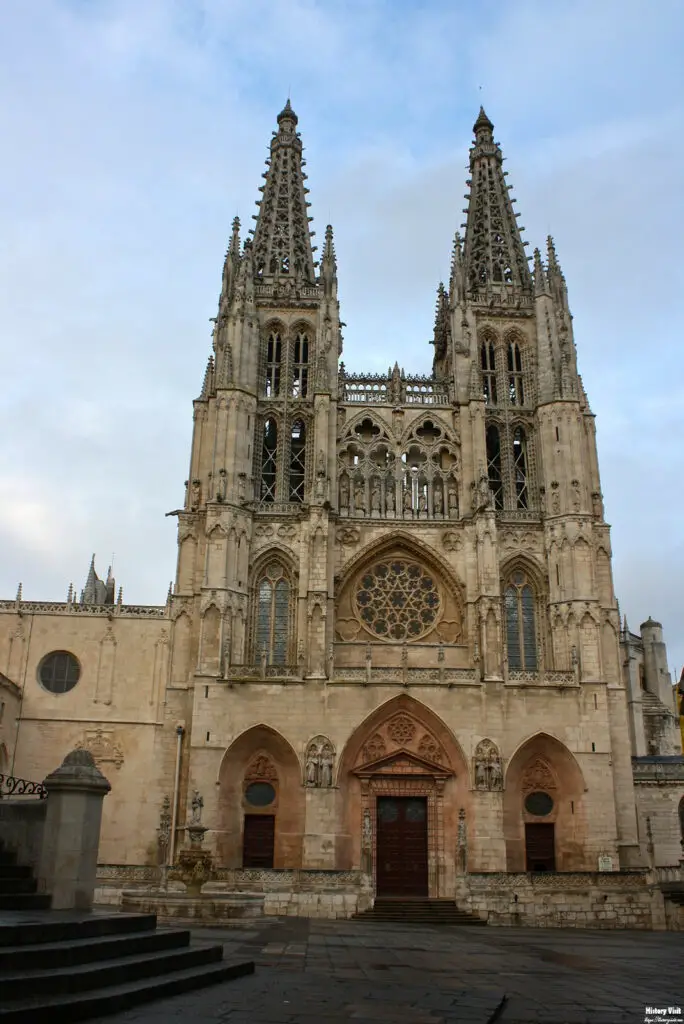
Burgos Cathedral is not just an architectural wonder but a living testament to the history, art, and faith of Spain. From its grand facade and portals to the serene cloister and richly decorated sacristy, every part of the cathedral tells a story of devotion and artistic achievement. Its construction, spanning centuries, reflects the evolving styles and influences that have shaped Spanish culture.
The cathedral’s intricate details, from the soaring nave to the vibrant stained glass windows, offer a feast for the eyes and a journey through time. Each visit reveals new facets of its beauty and significance, making it a place of continual discovery and inspiration. The Capilla del Condestable, with its blend of Gothic and Renaissance elements, is a particularly poignant example of the artistic and cultural currents that have shaped Burgos Cathedral.
Visiting Burgos Cathedral is not merely a sightseeing experience but an immersion into a rich tapestry of history and art. It stands as a testament to the enduring power of human creativity and spiritual devotion, inviting all who enter to reflect on the beauty and depth of our shared heritage. Whether you are a history enthusiast, an art lover, or a spiritual seeker, Burgos Cathedral offers a profound and enriching experience that leaves a lasting impression.


